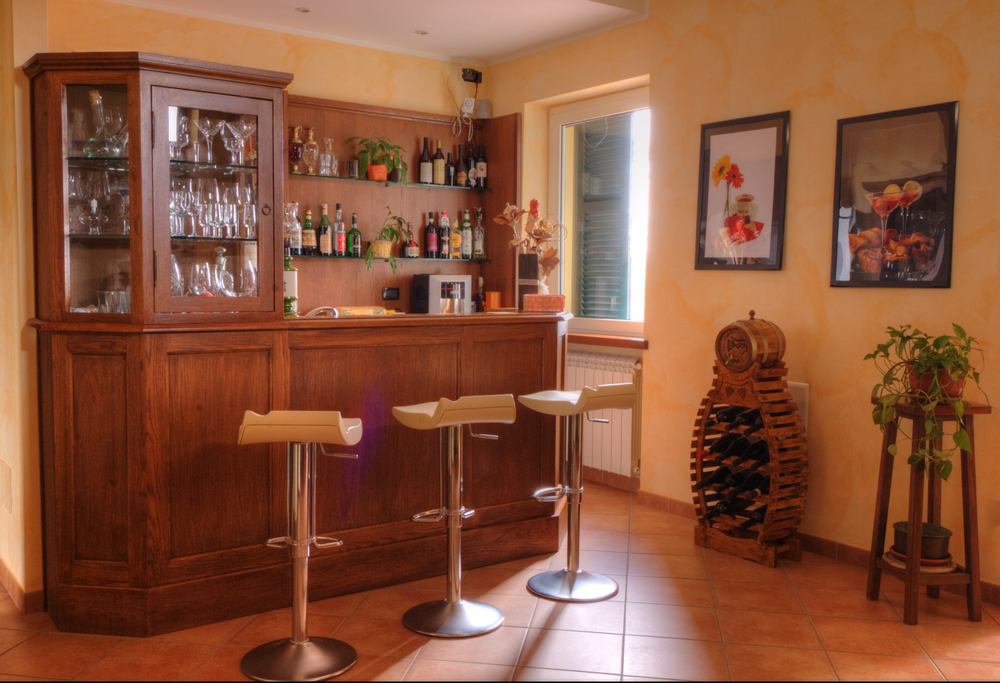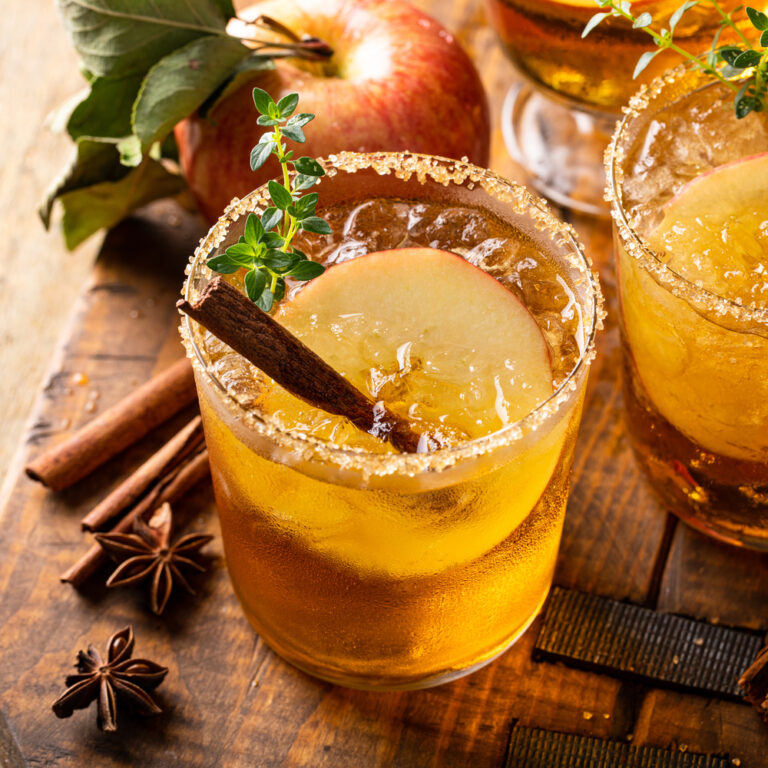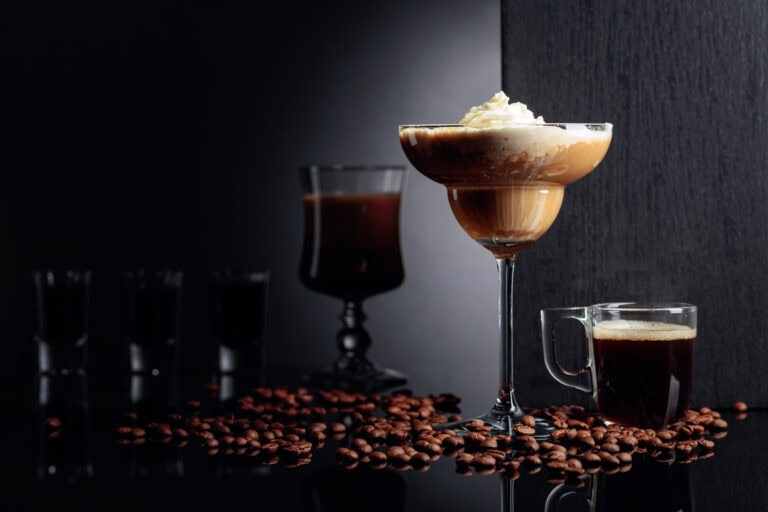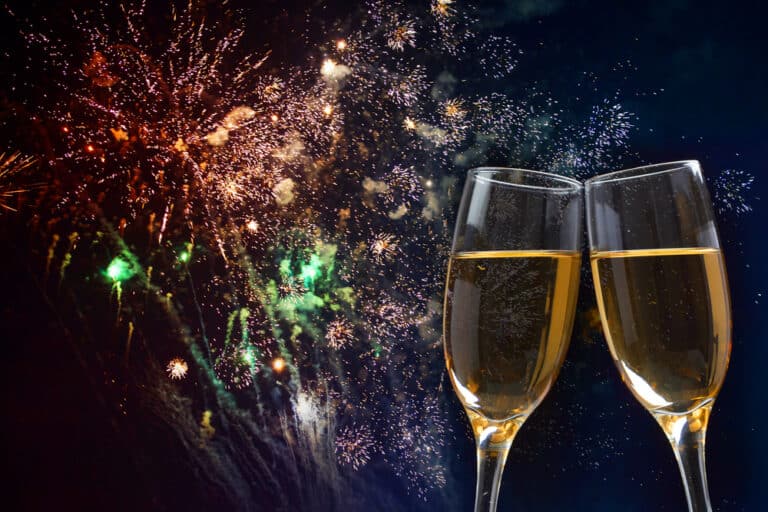Beginners Bartending Techniques: This Year’s Easy Guide To Great Cocktails
Whether you are looking to impress your friends or just want to enjoy a delicious cocktail at home, learning some bartending techniques can help you achieve your goals.
Bartending is an art that requires a lot of skill and knowledge. While professional bartenders have years of experience and training, home bartenders can also learn some of the techniques that they use to make great drinks.
This post may contain affiliate links. By clicking on an affiliate link I may financially benefit at no extra cost to you.
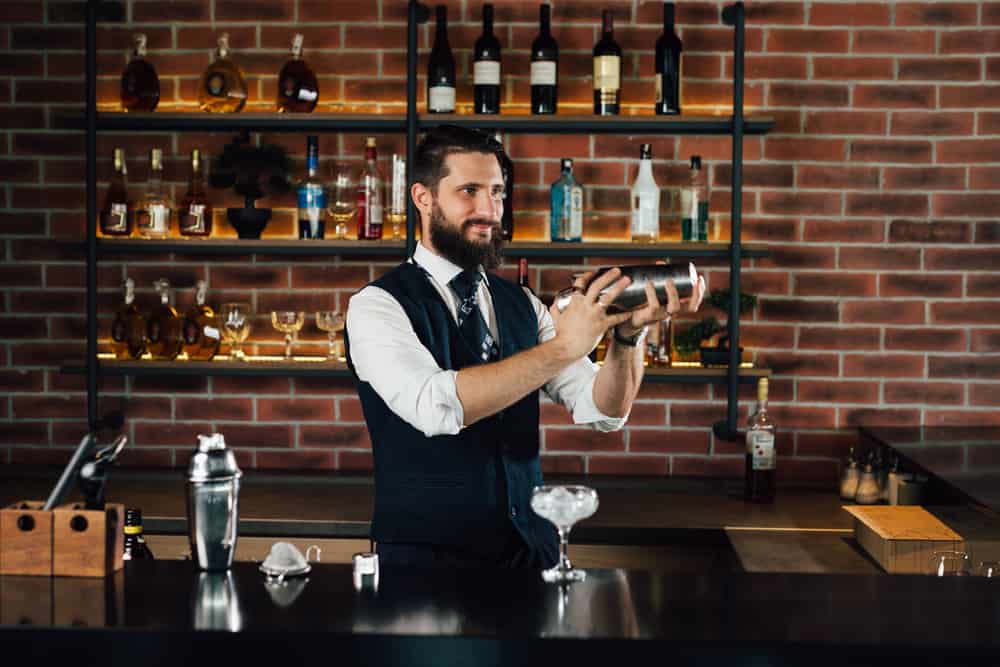
Start Your Home Bar Small And Let It Grow As Your Bartending Skills Improve
Your home bar can be as small as a shelf or as large as an entire wall unit. Customize it to fit your space. For small spaces, I recommend looking into bar carts as they are so useful and aesthetically pleasing to look at.
When we first moved to our Lake House it came with a small bar and I was so excited to get it set up. My items barely filled half of the upper area of one cabinet. It was so nice having my little bar area and I loved it!
Now let’s spring ahead to today. The entire upper cabinet is so full the doors barely close. Plus the lower cupboard is pretty stuffed as well and the countertop has an array of wine and other bar items.
I guess I need a bigger bar (hinting to my husband).
Mastering The Basic Bartending Techniques
One of the most important things that home bartenders should focus on is mastering basic bartending techniques and other bar lingo.
This information includes understanding the different types of spirits, mixers, and garnishes that are commonly used in cocktails.
Home bartenders should also learn how to properly measure ingredients, shake or stir drinks, and strain them into glasses.
By acquiring these basic techniques, home bartenders can create a wonderful variety of cocktails and experiment with their own unique recipes.
The Presentation Of Your Cocktail Recipe
Another important aspect of bartending is presentation. Professional bartenders often take great care in how they present their drinks, using garnishes, special glassware, and other decorations to make them look as good as they taste.
Home bartenders can also take inspiration from these techniques and use them to make their drinks look more appealing. By using colorful garnishes, and unique glassware, home bartenders can elevate their cocktails to the next level.
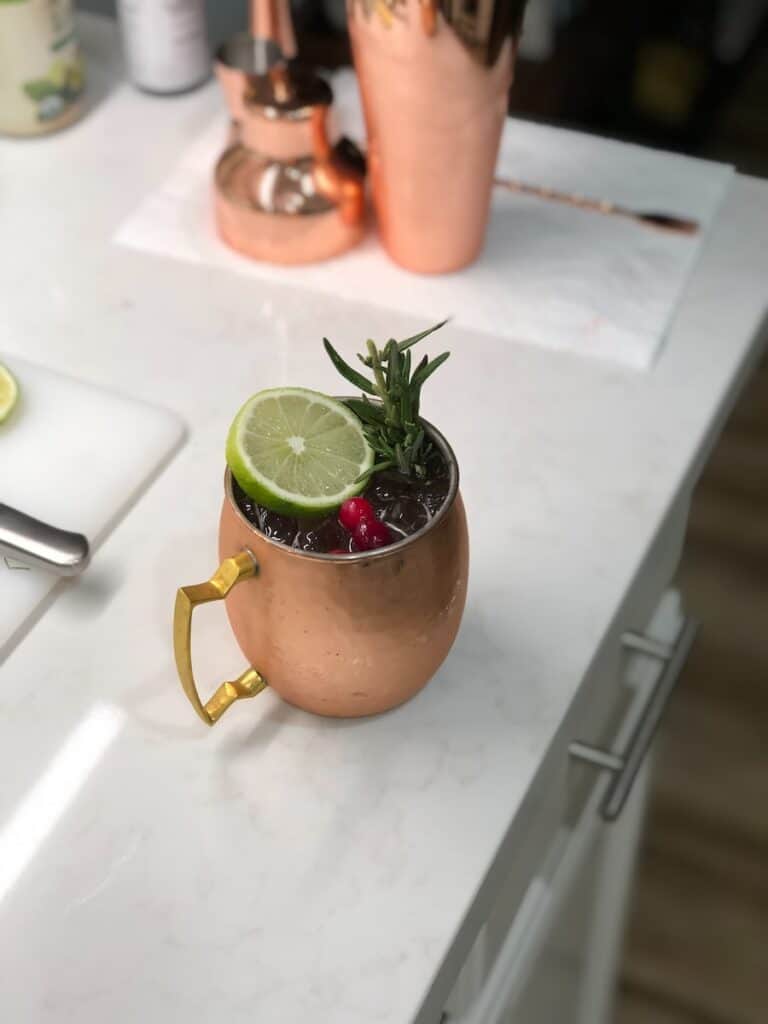
Flair Bartending Techniques For Every Home Bartender
Learning essential bartending techniques is crucial for any home bartender looking to impress their guests with delicious cocktails. Here are some of the most important techniques to get the hang of:
Shaking and Straining
Shaking is a technique used to mix ingredients that don’t naturally blend together, such as juices and spirits.
To shake a cocktail, fill a cocktail shaker (This post may contain Amazon affiliate links. By clicking on an affiliate link I may financially benefit at no extra cost to you.) with ice, add your ingredients, and shake vigorously for about 10-15 seconds.
Straining is the process of removing the ice and any small particles from the cocktail. Use a strainer to pour your cocktail into a glass, leaving the ice behind in the shaker.
 Buy Now →
Buy Now → (This post may contain Amazon affiliate links. By clicking on an affiliate link I may financially benefit at no extra cost to you.)
Stirring
Stirring is used for cocktails that don’t require the aeration that shaking provides, such as those made with only spirits.
To stir a cocktail, fill a mixing glass with ice, add your ingredients, and stir with a bar spoon (This post may contain Amazon affiliate links. By clicking on an affiliate link I may financially benefit at no extra cost to you.) for about 30 seconds.
 Buy Now →
Buy Now → (This post may contain Amazon affiliate links. By clicking on an affiliate link I may financially benefit at no extra cost to you.)
Muddling
Muddling is the process of crushing herbs, fruits, or spices to release their flavors.
To muddle (This post may contain Amazon affiliate links. By clicking on an affiliate link I may financially benefit at no extra cost to you.), place the ingredients in the bottom of a cocktail shaker (This post may contain Amazon affiliate links. By clicking on an affiliate link I may financially benefit at no extra cost to you.) or glass, and use a muddler (This post may contain Amazon affiliate links. By clicking on an affiliate link I may financially benefit at no extra cost to you.) or the back of a spoon to gently crush them.
Be careful not to over-muddle (This post may contain Amazon affiliate links. By clicking on an affiliate link I may financially benefit at no extra cost to you.), as this can release bitter flavors. I have made this mistake a few times and couldn’t figure out what I did wrong.
 Buy Now →
Buy Now → (This post may contain Amazon affiliate links. By clicking on an affiliate link I may financially benefit at no extra cost to you.)
Garnishing
Garnishes add visual appeal and flavor to cocktails.
Common garnishes include citrus peels, olives, cherries, and herbs. You can learn to be creative with your garnishes, and your cocktails will stand out even more.
Tools of the Trade For The Home Mixologist
Every bartender needs the right tools to make great drinks. Having these tools on hand will make it easy to mix up your favorite drinks at home.
Here are some of the essential tools for any home bartender:
Cocktail Shakers
Cocktail shakers are used to mix ingredients together. They come in different types and sizes.
To use a cocktail shaker (This post may contain Amazon affiliate links. By clicking on an affiliate link I may financially benefit at no extra cost to you.), fill the shaker with ice and ingredients. Shake vigorously.
Jiggers
Jiggers are used to measure ingredients accurately. They come in various sizes and are typically made of metal.
 Buy Now →
Buy Now → (This post may contain Amazon affiliate links. By clicking on an affiliate link I may financially benefit at no extra cost to you.)
A good jigger (This post may contain Amazon affiliate links. By clicking on an affiliate link I may financially benefit at no extra cost to you.) will have two sides, one for measuring larger amounts and one for measuring smaller amounts.
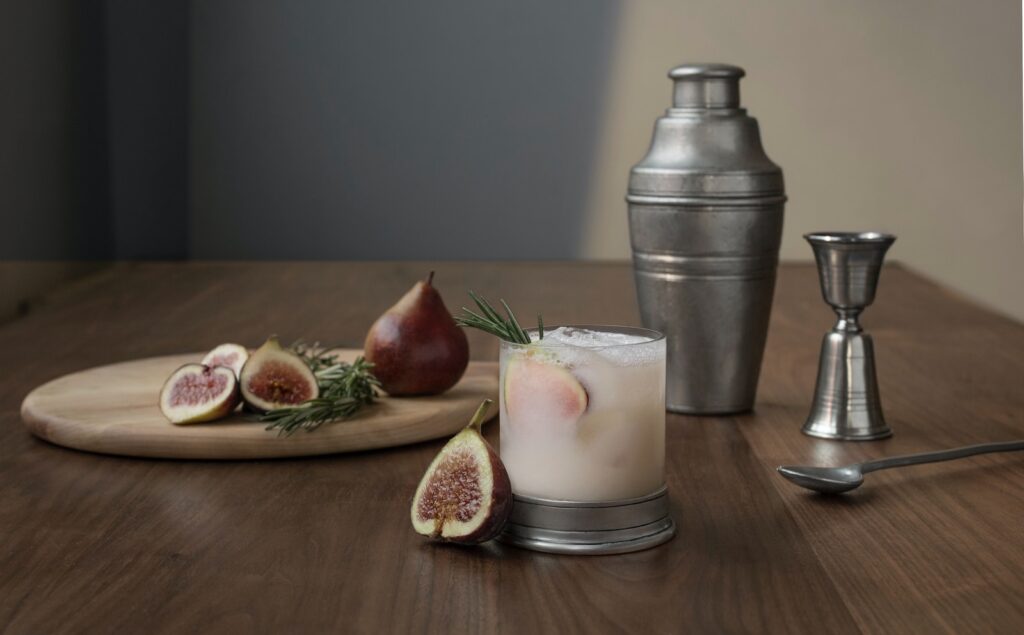
Bar Spoons
Bar spoons are used to stir drinks. They are typically long and thin, with a twisted handle that makes it easy to spin the spoon in your hand.
My favorite bar spoon (This post may contain Amazon affiliate links. By clicking on an affiliate link I may financially benefit at no extra cost to you.) has a flat end that can be used to muddle (This post may contain Amazon affiliate links. By clicking on an affiliate link I may financially benefit at no extra cost to you.) ingredients.
Strainers
Strainers are used to remove ice and other solids from drinks.
They come in various shapes and sizes, but the most common type is the Hawthorne strainer, which fits over the top of a shaker tin or mixing glass.
 Buy Now →
Buy Now → (This post may contain Amazon affiliate links. By clicking on an affiliate link I may financially benefit at no extra cost to you.)
Muddlers
Muddlers are used to crush ingredients, such as herbs or fruit, in the bottom of a glass or shaker tin.
They come in different shapes and sizes, but a good muddler (This post may contain Amazon affiliate links. By clicking on an affiliate link I may financially benefit at no extra cost to you.) will be sturdy and have a flat end that can be used to crush ingredients without damaging the glass or tin.
Common Ingredients To Use When Making Cocktails
When it comes to bartending, there are certain ingredients that every home bartender should have on hand. These ingredients can be split into four categories: spirits, mixers, bitters, and sweeteners.
Spirits
At the heart of any cocktail is the spirit. Here are a few spirits that are essential for most home bars:
- Vodka (my favorite is Ciroc)
- Gin
- Whiskey (bourbon, rye, and scotch)
- Rum
- Tequila
Each of these spirits has its own unique flavor profile and can be used in a variety of cocktails. It is best to use the best quality spirits you can afford.
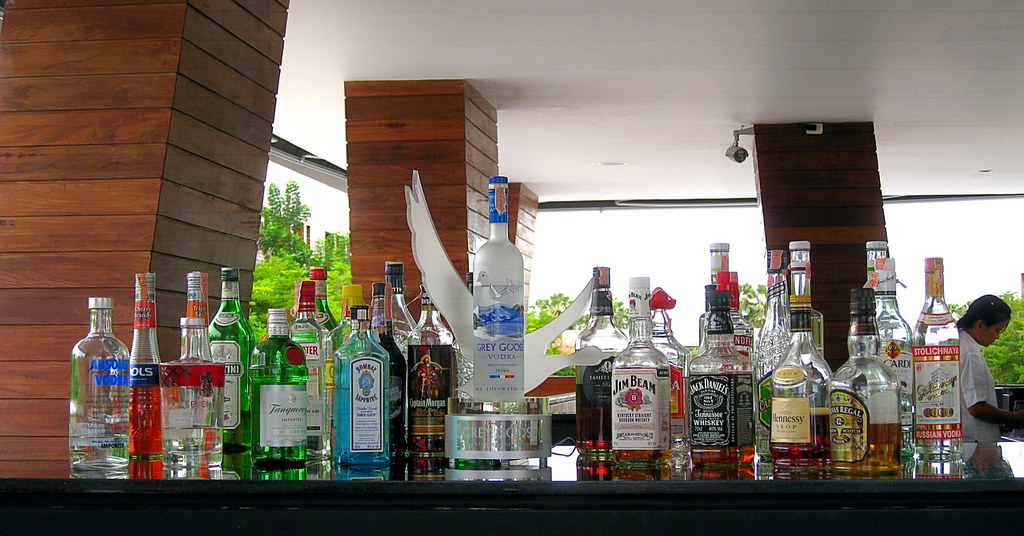
Mixers
Mixers are non-alcoholic ingredients that are used to dilute and add flavor to cocktails. Here are a few mixers that every home bartender should have on hand:
- Tonic water
- Soda water
- Cranberry juice
- Orange juice
- Lemon juice
These mixers can be used to make a variety of classic cocktails, such as the gin and tonic, vodka and cranberry, or the screwdriver.
Bitters
Bitters are concentrated flavoring agents that are used to add complexity and depth to cocktails. Here are a few bitters that every home bartender should have on hand:
- Angostura bitters (This post may contain Amazon affiliate links. By clicking on an affiliate link I may financially benefit at no extra cost to you.)
- Orange bitters (This post may contain Amazon affiliate links. By clicking on an affiliate link I may financially benefit at no extra cost to you.)
- Peychaud’s bitters
These bitters can be used in a variety of classic cocktails, such as the old-fashioned or the sazerac.
 Buy Now →
Buy Now → (This post may contain Amazon affiliate links. By clicking on an affiliate link I may financially benefit at no extra cost to you.)
Sweeteners
Sweeteners are used to balance the flavors in cocktails and add sweetness. Here are a few sweeteners that every home bartender should have on hand:
- Simple syrup (Here is my home remedy)
- Honey
- Agave nectar (This post may contain Amazon affiliate links. By clicking on an affiliate link I may financially benefit at no extra cost to you.)
 Buy Now →
Buy Now → (This post may contain Amazon affiliate links. By clicking on an affiliate link I may financially benefit at no extra cost to you.)
These sweeteners can be used to make a variety of classic cocktails, such as the margarita or the whiskey sour.
Tips On Creating An Amazing Home Bar
Setting up a home bar can be a fun and rewarding experience for any aspiring home bartender. They come in all shapes and sizes. Here are some tips to help you get started:
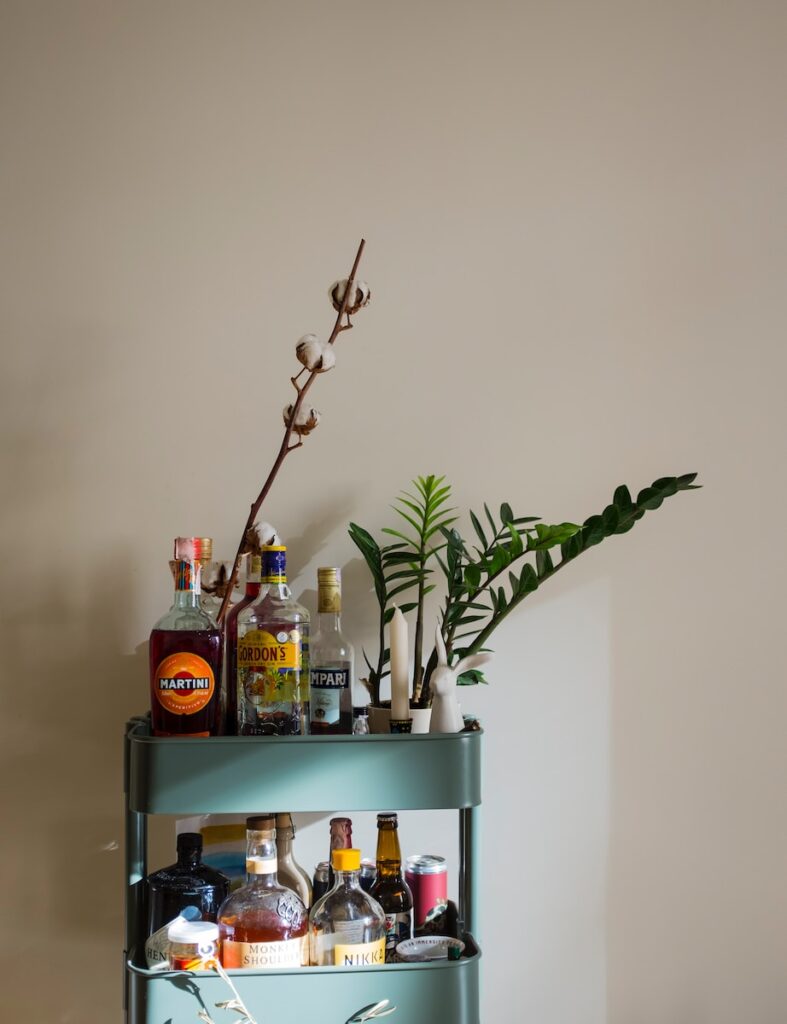
Organizing Your Bar
Once you have your spirits and mixers, it is important to organize your bar in a way that makes sense to you. Some tips for organizing your bar include:
- Grouping your spirits by type (e.g. all whiskeys together)
- Keeping frequently used items within easy reach
- Labeling bottles to make them easy to identify
- Have a cocktail recipe journal (This post may contain Amazon affiliate links. By clicking on an affiliate link I may financially benefit at no extra cost to you.) nearby to save your favorite recipes
By organizing your bar, you will be able to quickly and efficiently make cocktails without having to search for ingredients.
Choosing Glassware
The final step in creating your home bar is choosing the appropriate glassware for your cocktails. Some common types of glassware include:
| Glass Type | Recommended Use |
| Highball | For cocktails with a lot of mixers |
| Lowball | For cocktails with a little mixer |
| Cocktail | For cocktails served up (without ice) |
| Martini | For martinis and other gin or vodka-based cocktails |
By choosing the appropriate glassware, you can enhance the presentation and overall drinking experience of your cocktails and therefore start to look more professional.
Check out one of my other posts on cocktail glassware to help you out with these decisions.
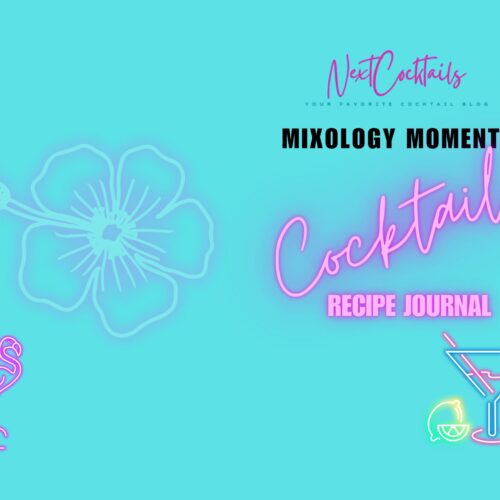
Mixology Moments Cocktail Recipe Journal
Buy Now →(This post may contain Amazon affiliate links. By clicking on an affiliate link I may financially benefit at no extra cost to you.)
Finally, another important item for your home bar is a Recipe Journal for all of your favorite Cocktail Recipes. Check out the one I created below.
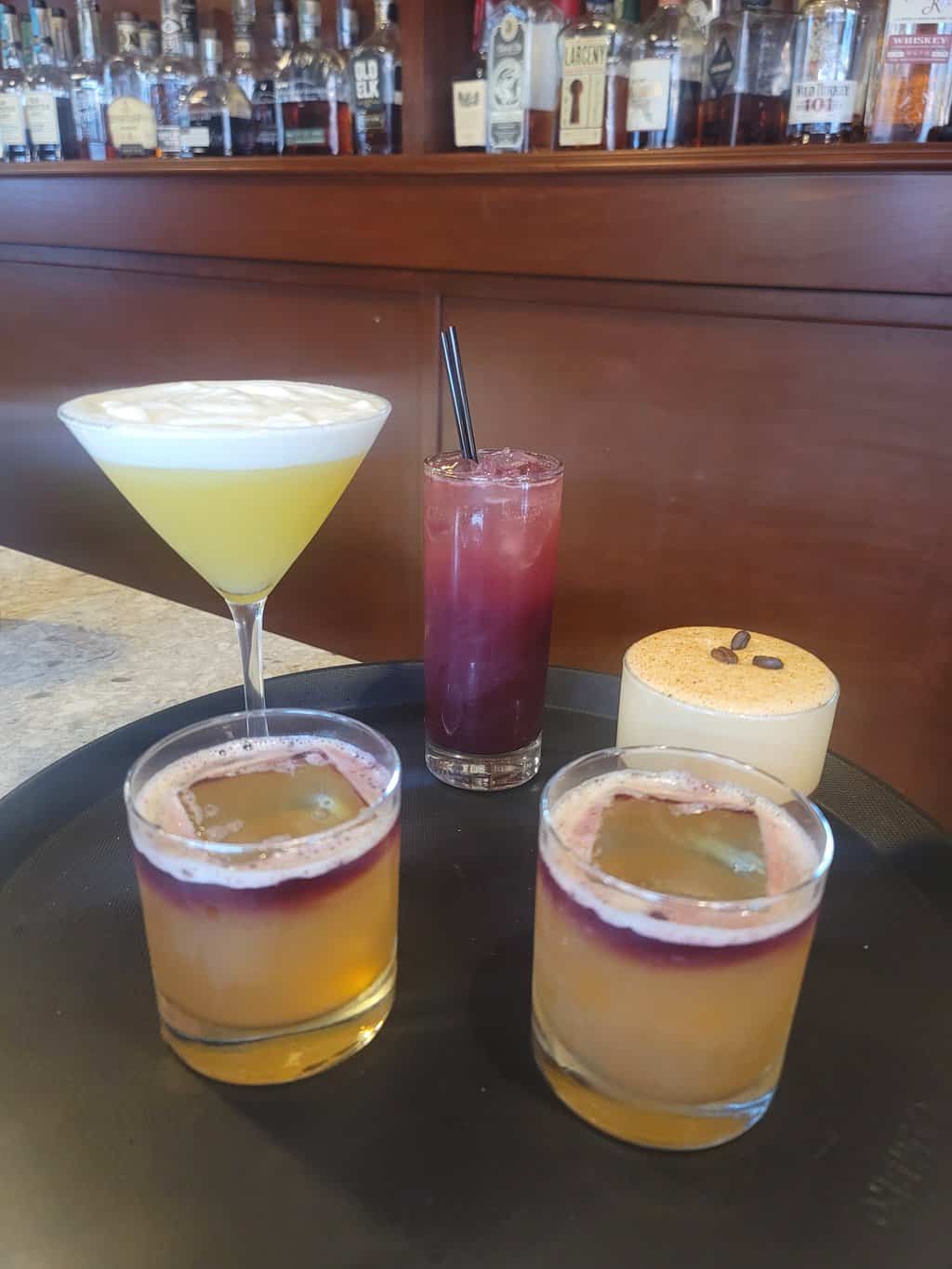
Advanced Bartending Techniques – Cocktail Skills That Are More Complex
Layering
Layering is a technique used to create visually appealing drinks with multiple layers of different colors.
To layer a drink, start by pouring the heaviest ingredient into the glass, followed by the next heaviest, and so on. The key is to pour each ingredient slowly and gently over the back of a spoon to prevent the liquids from mixing.
A great layered cocktail recipe is the B-52.
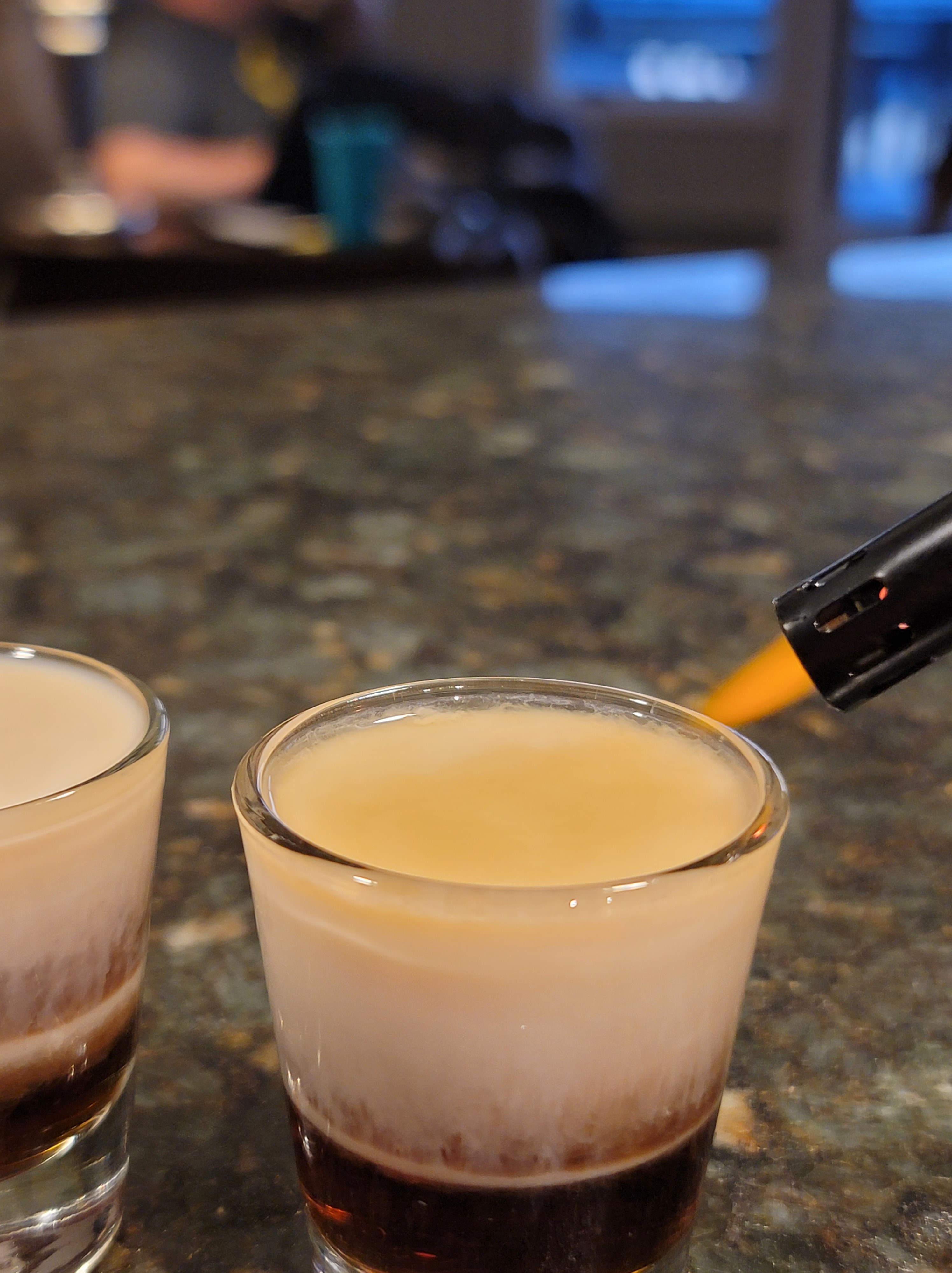
Flaming Bartending Technique
Flaming is a technique used to add a dramatic effect to a drink. It looks so pretty and will surely wow your crowd.
To flame a drink, pour a high-proof spirit over the surface of the drink and light it with a match or lighter. The flame will burn off the alcohol and leave a unique flavor. It’s important to use caution when flaming a drink. Always blow out the drink before drinking, and never leave a lit drink unattended.
Some popular flaming cocktails include the Blue Blazer and the Flaming Angel.
Infusing Bartending Techniques
Infusing is a technique used to add flavor to spirits. To infuse a spirit, add herbs, fruits, or spices to the bottle and let it sit for a period of time.
The longer the infusion sits, the stronger the flavor will be. Some popular infused spirits include Rainbow Water and Stoli Doli.

Carbonating Bartending Techniques
Carbonating is a technique used to add bubbles to a drink.
To carbonate a drink, use a carbonation system like SodaStream or add carbonated water or soda to the drink. Some popular carbonated cocktails include the Gin Fizz and the Moscow Mule.
 Buy Now →
Buy Now → (This post may contain Amazon affiliate links. By clicking on an affiliate link I may financially benefit at no extra cost to you.)
Now Is Your Chance To Try Some Basic Bartending Skills On Your Own
The above bartending techniques can add a new level of complexity and excitement when whetting your whistle. With practice and patience, you can master these techniques and create impressive cocktails for your guests and yourself.
Here is my challenge to you – Try one of my techniques and share it with me! We always love to see your amazing drinks here at Next Cocktails!

